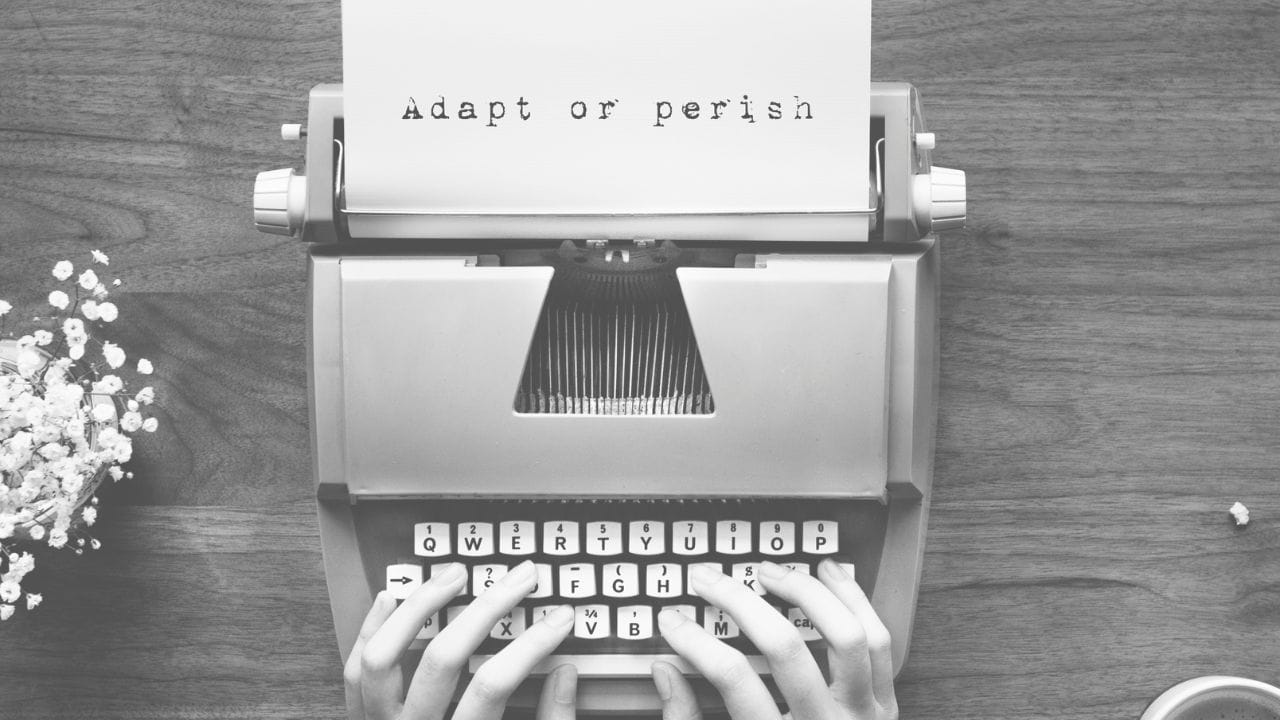GenAI is a reality, and it will continue making a fuss a little bit more in human life until it becomes another common available tool to help with human daily and professional tasks. There’s no sense in fighting it back by pointing out what it does wrong—its developers have already acknowledged that it has several flaws, and its users have already experienced them!
Don’t focus your energy on criticising its implementation in your industry, instead, use the powerful tool that as a human you possess—your BRAIN—and make yourself indispensable.
Yes, there will be human brains left behind, but only those that get stuck in what they already know and do not seek continuous development. I don’t mean we have to simply adapt. I mean that we have to use our complex and marvellous brains to stand out.
Use your brain, that’s the only way!
GenAI is here
Generative Artificial Intelligence (GenAI) is a sophisticated deep learning model that uses algorithms to create different types of content across different domains; for example, text, images, video, sound, speech, music, software code, design, art, and simulations and synthetic data in response to a person’s prompt or request. Individuals and organisations are experimenting with GenAI to see how it can improve their daily and professional tasks.
But to fully understand what GenAI is and why it is making a lot of fuss, we first need to understand the technologies upon which it is built.
What is deep learning?
In his article “What is deep learning?”, Jim Holdsworth describes deep learning as a subset of machine learning that uses multi-layered neural networks to simulate the complex decision-making power of the human brain, and states that the main difference between deep learning and machine learning is the structure of the underlying neural network architecture and how their algorithms learn. Artificial neural networks attempt to mimic the human brain through a combination of data inputs, weights and biases, all acting as silicon neurons.
Deep learning requires a great amount of computing power. This computing power is necessary to train deep algorithms through deep learning. However, it demands a large number of resources, and it is incredibly costly to scale.
Some form of deep learning already powers most of the AI applications we use in our lives.
The Marvellous Human Brain
I think the two key terms you can find in most definitions of Artificial Intelligence are “simulate” and “complex”. Artificial Intelligence was created and is being trained to try to simulate the complex human brain. But the fact is—and this comes to our advantage—that humans have not yet unravelled all the human brain’s marvellous and complex functioning, so how can it be possible to create machines that will mimic—let alone—replace our brains if we, humans, do not know yet how our brains fully work?
How much do we really know about our brains?
Researchers have made significant progress in the field of experimental techniques; but still the human cognitive function that emerges from neuronal structure and dynamics is not yet entirely understood.
Most studies of brain function have mainly focused on analysing the different electrical activity produced in response to sensory stimuli. However, it is necessary to study other features and functions of the brain, including information processing and responding to environmental demands.
The brain is much more than the sum of its parts.
Some of the human brain’s capabilities include:
- Memory and Learning. Memory is a mental process linked to emotions, sensations, and our experience of the physical world. Without this brain’s ability we could not be able to learn or develop since the learning process rests on a foundation of previous knowledge. Memory plays a key role in learning, decision-making and overall cognitive function.
- Adaptability and Creativity. The human brain has an extraordinary ability to adapt to the environment, take on challenges, conceive new ideas and convert them into practical tools to improve and make our lives more enjoyable. The innate creativity and adaptability are the essence of our humanity.
- Energy Efficiency. The brain’s energy consumption makes it highly effective for sustained and diverse cognitive tasks. In computing terms, the human brain can perform the equivalent of an exaflop with just 20 watts of power while supercomputers used to train deep neural networks need 20 megawatts to pull off this feat.
- Contextual Understanding. Our contextual or “practical” intelligence helps us react and deal with the physical world around us. Cognitive psychology research has found that the cognitive processes involved in everyday situations are inextricably associated with the context of the situation or problem being faced with. The ability of our brains to process and identify the context of a situation and categorise the different stimuli is essential for us to decide and act in our interactions with other people and with the physical world around us.
These are just some of the human brain’s capabilities that distinguish us from AI. And it is no secret that there are human brains behind GenAI development, trying to create something that will “surpass and replace” human brains by mimicking humans’ neural functioning. But the truth is that there will also be human brains ahead of GenAI because how can it be possible to surpass something that we—humans—possess and do not fully know yet how it really works?
Medicine and GenAI
GenAI offers lots of productivity benefits for individuals and organisations, and it is revolutionising and transforming the medical field as regards diagnostics, research, treatment planning, and patient care. However, the integration of these technologies into the existing healthcare infrastructure poses challenges and risks, especially in the field of data protection.
Our mission as human medical translators is to accompany the advancement of medicine with specialised translation services supported by subject matter knowledge, real-world experience and, most importantly, core human values such as quality and confidentiality. Yes, computer systems are faster than our human neurons but come with associated data protection risks and they still lag behind the marvellous human brain’s cognitive functions only humans—inexplicably—know how to use.
Translation industry and GenAI
The translation industry has also been revolutionised and transformed by technology as a consequence of a broader shift in global business dynamics. Over the past 50 years, the industry of translation has morphed from laborious, manual tasks to sophisticated, tech-driven processes which have helped improve quality and productivity in the translation process.
It all started back in the 70s and 80s when computers became more accessible and CAT tools entered the stage not only as the translators’ helpers but as the game-changers in the translation industry.
CAT tools allow translators to store their translations into databases called Translation Memories (TMs) and to retrieve them at any time when needed to ensure consistency across the translation of documents of one client account. This technological evolution in the translation industry contributes to maintaining consistency and providing high-quality translations jobs as well as boosting the translators’ productivity. It is worth pointing out that despite the use of CAT tools, the translation job is still exceptionally done by the human translators.
For those translators under 40, this has always been the reality; that is, they started their career into translation using these technological innovations. Those over 40 have had to endure the manual process of translation at some point in our careers.
In my last year of translation studies, I recall having to go to final exams carrying kilos of hardcover dictionaries. The classroom looked more like a library—multiple my kilos by forty-something students in the same situation—than a student classroom.
We all survived! We survived the laborious and manual translation process and we also survived when the technological innovations entered our industry—at that time, we also heard about “being replaced by machines,” and let me tell you something, WE WILL SURVIVE the GenAI era too because we are capable of adapting, transforming, and using whatever comes in our way and turning it to our advantage. But we have to wake up. We cannot keep doing the same thing—get stuck in what we already know—and expect to have different results. GenAI—or whatever name it is given in the future—will replace humans in their standard or simple tasks, but it will not replace humans in the more complex and relevant tasks, and translation, especially medical translation, is not a simple task. Humans add value to a translation job that machines simply can’t.
What can translators do to survive in the GenAI era?
Adapt or perish.
Yes, “adapt,” not in the sense of adopting AI in our translations and accepting underpaid translation jobs or MTPE tasks, but in the sense of transforming ourselves, our profession, without losing our essence. Life is continuous change. Change is part of life. If there is no change, humans do not evolve. Change is not a bad thing. Change is an opportunity.
How to adapt? Accept reality. GenAI is here, and it will stay. Stop wasting your time complaining and fighting it back. Instead, focus your time and energy on what you as a premium human can offer. Improve your skills. Specialise in a translation field. When I say “specialise,” I mean study, get prepared, learn more than what you already know. Keep up to date not only with your business industry but with the one you’re working for. Use continuous learning to differentiate from the machine. Yes, it takes time, effort, and in some cases a lot of money, but it will really pay off. You will need it to add value to your translation jobs. A continuous influx of knowledge plus your real-world experience will make you unbeatable.
Know your value and stand up for it! The real problem behind AI is not that it is going to replace us. Those who know how precious the human brain is know that we are millions of years ahead of AI. What’s the problem then? The problem is the business behind AI and the marketing strategy used to sell the idea that everything will be done extraordinarily well in a few seconds, and that it won’t cost much. And that’s a lie. Supercomputers used to train GenAI models need enormous amounts of power to pull off this feat, and do you think that’s cheap? Besides, these supercomputers are not human brains, and do not perform like human brains.
I think I’ve made myself clear throughout the lines of this article: GenAI is here, it’s a reality and we have to live with it, and despite any technological innovation that may threaten to “replace humans”, we still have and will always have the best supercomputer ever: our BRAINS.
Don’t take your brain for granted. Use it! Develop it! Don’t worry about what Artificial Intelligence can or can’t do. Instead, worry about you, what are you doing to improve your own natural super machine?

References:
Physiology, Brain – StatPearls [Internet]
What is artificial intelligence (AI)? – IBM
What is generative AI? – IBM
Your Brain Is Incredibly Creative and Adaptable – Psychology Today
Brain-Inspired Computing Can Help Us Create Faster, More Energy-Efficient Devices — If We Win the Race – NLST
The Marvel of the human brain: Unravelling neural networks – THE BUSINESS STANDARD
Generative AI in Medical Practice: In-Depth Exploration of Privacy and Security Challenges – PubMed Central
Contextual Reasoning in Human Cognition and its Implications for Artificial Intelligence Systems – Openscience.fr

